Quick Summary: Stubborn lime scale in your toilet bowl is no match for simple household solutions! You can remove lime scale by using vinegar and baking soda, citric acid, or a commercial lime scale remover. Regular cleaning and maintenance will prevent build-up, keeping your toilet sparkling and functional. Let’s get started and say goodbye to those unsightly stains!
Is your toilet bowl looking a little worse for wear? Those chalky, white or brownish stains are likely lime scale, a hard, crusty deposit caused by mineral-rich water. Don’t worry; you’re not alone! Lime scale is a common problem, especially in areas with hard water. But the good news is, you don’t need harsh chemicals or expensive plumbers to fix it.
With a few simple steps and common household items, you can easily remove lime scale and restore your toilet to its former glory. We’ll walk you through everything you need to know, from identifying lime scale to preventing future build-up. Let’s dive in!
What is Lime Scale and Why Does It Form?
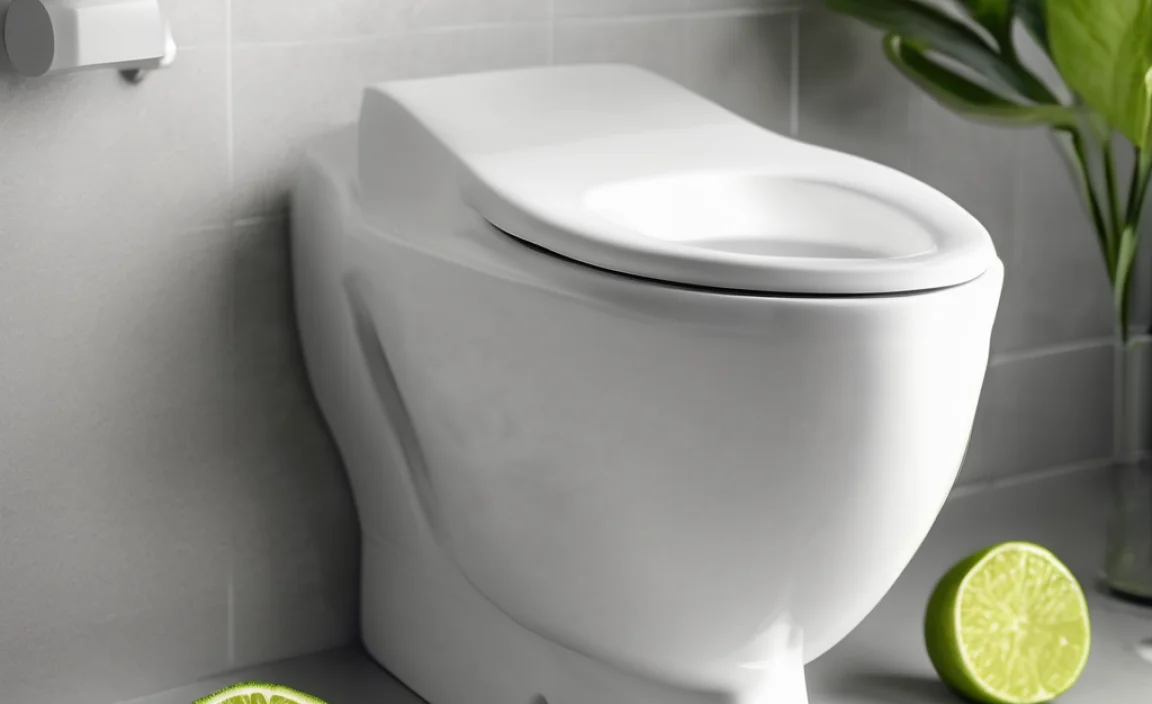
Lime scale is a hard, chalky deposit primarily composed of calcium carbonate (CaCO3). It forms when hard water, which contains dissolved minerals like calcium and magnesium, evaporates or is heated. This process causes the minerals to precipitate out of the water and form a solid coating on surfaces.
Factors Contributing to Lime Scale Formation:
- Hard Water: The higher the mineral content in your water, the more likely you are to experience lime scale build-up.
- Water Temperature: Hot water accelerates the formation of lime scale.
- Frequency of Use: Toilets that are flushed frequently are more prone to lime scale.
- Surface Material: Rough or porous surfaces provide more places for lime scale to adhere.
Identifying Lime Scale in Your Toilet
Lime scale typically appears as:
- White or yellowish crusty deposits
- Rough, uneven texture on the toilet bowl surface
- Stains that are difficult to remove with regular cleaning
Tools and Materials You’ll Need
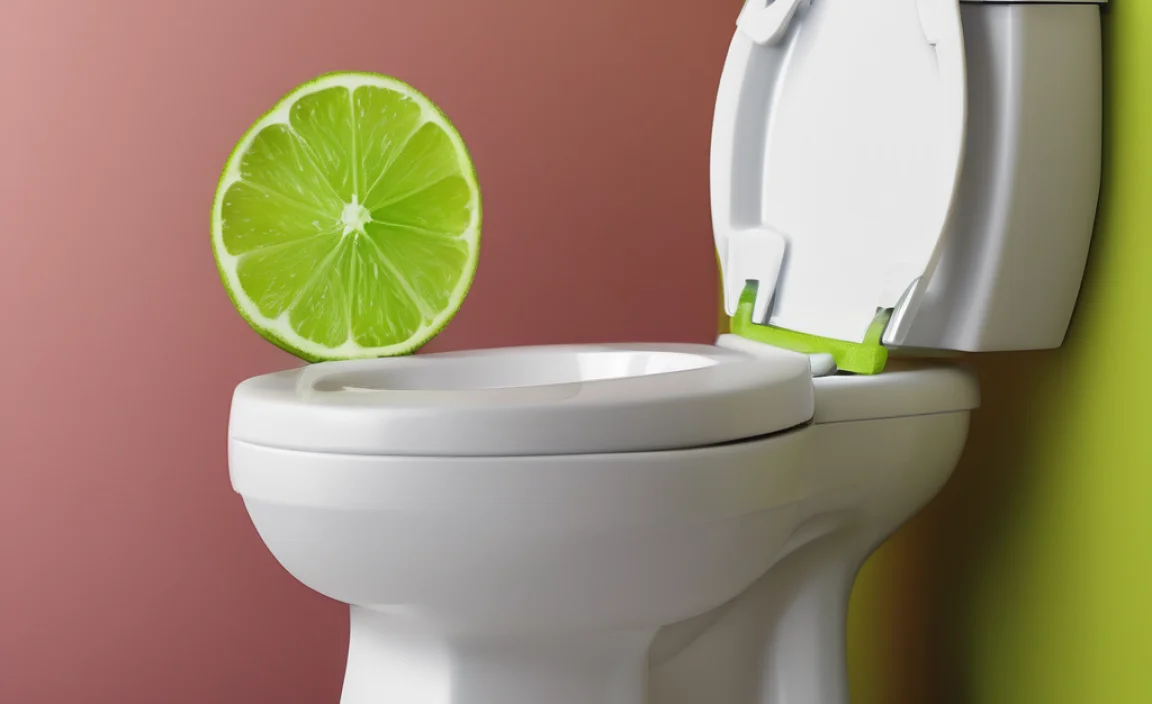
Before we get started, gather these essential tools and materials. Most of these are common household items, making this a budget-friendly DIY project.
- White Vinegar: A natural and effective cleaning agent.
- Baking Soda: Helps to create a powerful fizzing action when combined with vinegar.
- Toilet Brush: For scrubbing the bowl.
- Pumice Stone: Excellent for removing stubborn lime scale.
- Rubber Gloves: To protect your hands.
- Eye Protection: Safety first!
- Spray Bottle (Optional): For easier application of cleaning solutions.
- Citric Acid (Optional): A strong, natural acid that can dissolve lime scale.
- Lime Scale Remover (Optional): A commercial product designed for this purpose.
Method 1: Vinegar and Baking Soda
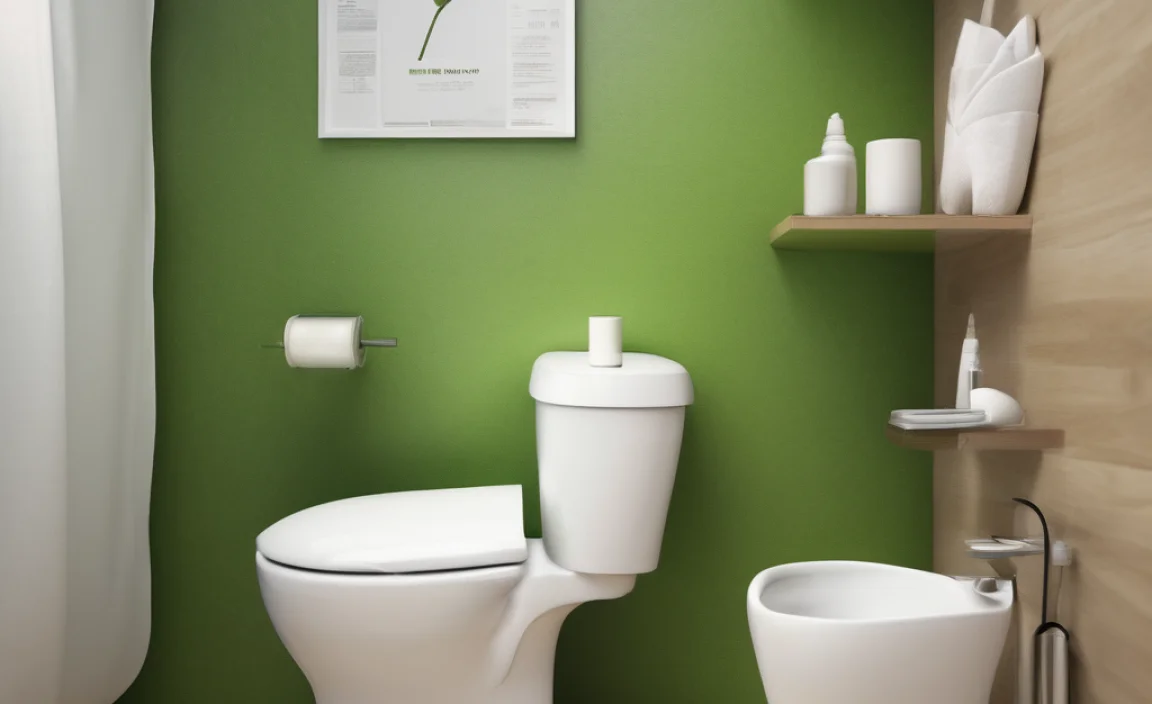
This method uses the power of vinegar and baking soda to dissolve lime scale naturally. It’s safe, effective, and uses ingredients you probably already have.
Step 1: Drain the Toilet Bowl
Start by turning off the water supply to the toilet. You’ll usually find the shut-off valve behind the toilet, near the floor. Flush the toilet to remove as much water as possible. Use a small container or sponge to remove any remaining water from the bowl.
Step 2: Apply Baking Soda
Sprinkle about one cup of baking soda evenly around the inside of the toilet bowl, focusing on the areas with lime scale build-up. Make sure to cover the stains completely.
Step 3: Add Vinegar
Slowly pour two cups of white vinegar over the baking soda. The mixture will start to fizz – this is the chemical reaction that helps to break down the lime scale. Let it fizz and work its magic for at least 30 minutes, or even better, overnight.
Step 4: Scrub the Bowl
After the soaking period, use a toilet brush to scrub the bowl thoroughly. Pay extra attention to the areas with heavy lime scale build-up. The vinegar and baking soda should have loosened the deposits, making them easier to remove.
Step 5: Flush and Repeat if Necessary
Turn the water supply back on and flush the toilet to rinse away the dissolved lime scale and cleaning solution. If some lime scale remains, repeat the process or try one of the other methods described below.
Method 2: Citric Acid
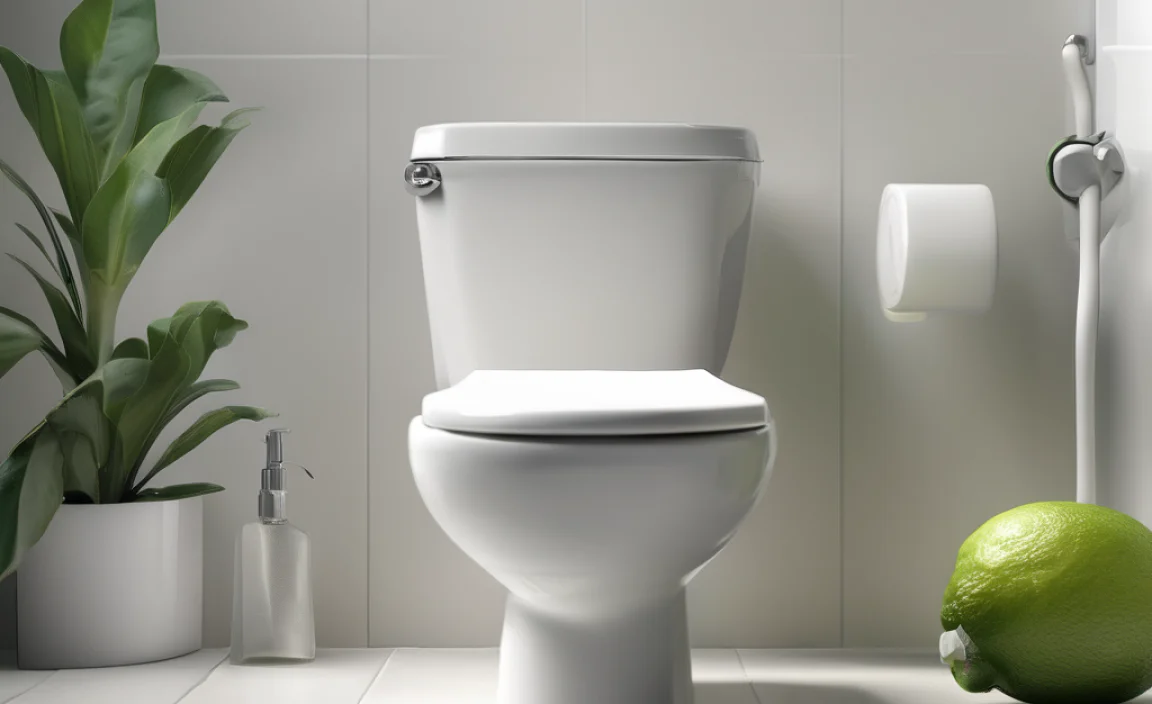
Citric acid is a natural, biodegradable acid found in citrus fruits. It’s a powerful lime scale remover and a great alternative to harsh chemicals.
Step 1: Drain the Toilet Bowl
As with the previous method, turn off the water supply and remove as much water as possible from the toilet bowl. A dry bowl ensures the citric acid works directly on the lime scale.
Step 2: Apply Citric Acid
Pour about ½ cup of citric acid powder directly onto the lime scale deposits. You can also mix the citric acid with a small amount of hot water to form a paste, which may be easier to apply to vertical surfaces.
Step 3: Let it Sit
Allow the citric acid to sit for at least 2-3 hours, or preferably overnight. This gives the acid time to dissolve the lime scale.
Step 4: Scrub and Flush
Use a toilet brush to scrub the bowl, paying attention to the treated areas. The lime scale should now be much easier to remove. Turn the water supply back on and flush the toilet to rinse.
Method 3: Commercial Lime Scale Remover
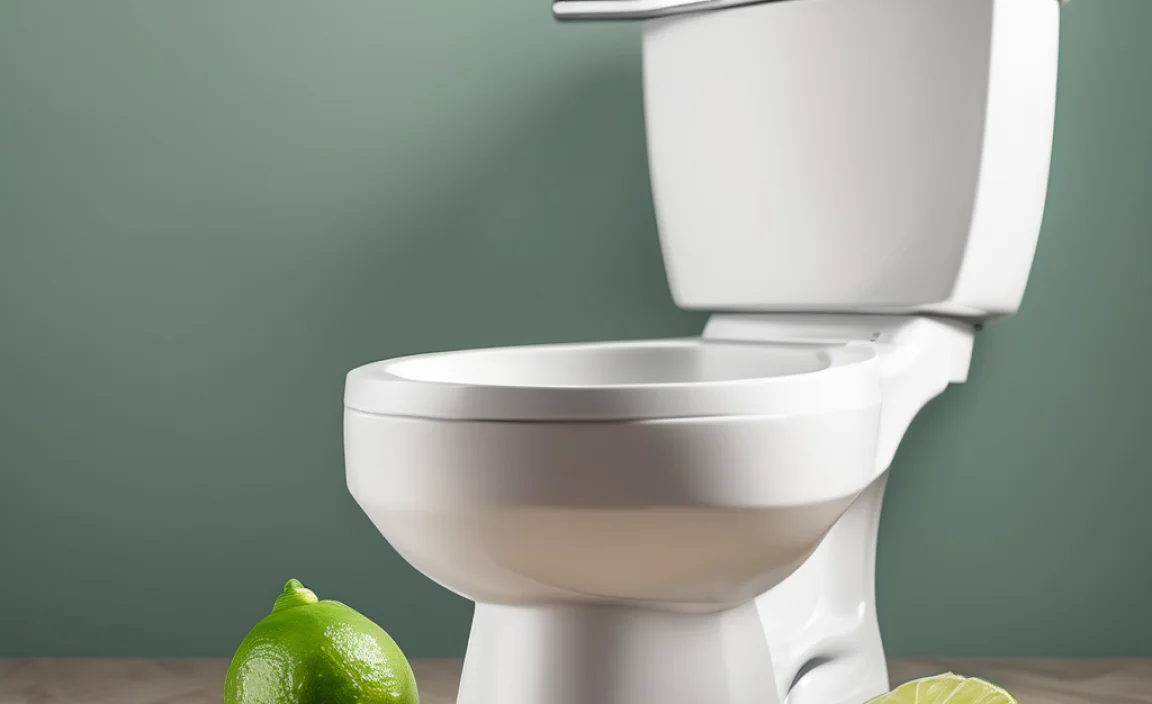
If natural methods aren’t cutting it, a commercial lime scale remover might be necessary. These products are specifically formulated to dissolve tough lime scale deposits.
Step 1: Choose a Suitable Product
Select a lime scale remover that is safe for use in toilets and won’t damage the plumbing. Read the product label carefully and follow the manufacturer’s instructions.
Step 2: Apply the Remover
Turn off the water supply and drain the toilet bowl as before. Apply the lime scale remover directly to the affected areas, following the instructions on the product label. Some products may require you to let them sit for a specific amount of time.
Step 3: Scrub and Flush
After the recommended soaking time, scrub the bowl thoroughly with a toilet brush. Flush the toilet to rinse away the remover and dissolved lime scale.
Safety Note:
When using commercial lime scale removers, always wear rubber gloves and eye protection to protect your skin and eyes from irritation. Ensure proper ventilation in the bathroom.
Method 4: The Pumice Stone Trick
A pumice stone can be a surprisingly effective tool for removing stubborn lime scale, especially those hard-to-budge deposits. However, use it carefully to avoid scratching the porcelain.
Step 1: Wet the Pumice Stone
Soak the pumice stone in water for a few minutes. This will soften it and reduce the risk of scratching the toilet bowl.
Step 2: Gently Rub the Lime Scale
Gently rub the wet pumice stone over the lime scale deposits. Use light pressure and a circular motion. Avoid pressing too hard, as this can scratch the porcelain.
Step 3: Rinse and Repeat
Rinse the area with water and check your progress. Repeat the process as needed until the lime scale is removed. Keep the pumice stone and the toilet surface wet during the process.
Important:
Always test the pumice stone in an inconspicuous area of the toilet bowl first to ensure it doesn’t scratch the surface. If you notice any scratching, discontinue use immediately.
Comparing the Methods
Here’s a quick comparison table to help you decide which method is best for your situation:
| Method | Effectiveness | Cost | Safety | Pros | Cons |
|---|---|---|---|---|---|
| Vinegar and Baking Soda | Moderate | Low | Very Safe | Natural, readily available | May require multiple applications |
| Citric Acid | High | Low | Safe | Natural, strong cleaning power | May need to order online |
| Commercial Lime Scale Remover | Very High | Moderate | Use with caution | Fast and effective | Can be harsh, requires ventilation |
| Pumice Stone | Moderate to High | Low | Can scratch surfaces | Good for stubborn deposits | Requires careful use |
Preventing Future Lime Scale Build-Up
Prevention is always better than cure! Here are some tips to help prevent lime scale from forming in your toilet bowl:
- Regular Cleaning: Clean your toilet bowl at least once a week to prevent lime scale from building up.
- Use a Toilet Bowl Cleaner: Use a toilet bowl cleaner that is specifically designed to prevent lime scale.
- Water Softener: Consider installing a water softener in your home to reduce the mineral content of your water. The EPA offers information about maintaining water quality.
- Vinegar Rinse: Pour a cup of white vinegar into the toilet bowl every few weeks and let it sit overnight to help prevent lime scale from forming.
- Flush Regularly: Flush the toilet regularly, even if it’s not being used, to prevent water from sitting in the bowl for extended periods.
Dealing with Lime Scale in Other Areas
Lime scale isn’t just a toilet problem. It can affect other areas of your home, such as faucets, showerheads, and appliances. Here’s how to tackle it in these areas:
Faucets and Showerheads
- Vinegar Soak: Soak the faucet or showerhead in white vinegar for several hours or overnight.
- Vinegar Pouches: For showerheads you can’t remove, fill a plastic bag with vinegar and secure it around the showerhead with a rubber band.
- Rinse and Scrub: After soaking, rinse thoroughly with water and scrub with a brush to remove any remaining lime scale.
Appliances (Kettles, Coffee Makers)
- Vinegar Solution: Fill the appliance with a solution of equal parts white vinegar and water.
- Boil or Run: For kettles, boil the solution. For coffee makers, run a brewing cycle.
- Rinse Thoroughly: Rinse the appliance several times with clean water to remove any traces of vinegar.
Frequently Asked Questions (FAQ)
1. Is lime scale harmful to my health?
No, lime scale itself is not harmful to your health. It’s primarily a cosmetic issue. However, heavy build-up can affect the efficiency of appliances and plumbing.
2. Can I use bleach to remove lime scale?
Bleach is not effective at removing lime scale and should not be mixed with other cleaning agents like vinegar, as it can create hazardous fumes. It’s best to stick to the methods described above.
3. How often should I clean my toilet to prevent lime scale?
Cleaning your toilet at least once a week is a good practice to prevent lime scale build-up. Regular maintenance is key to keeping your toilet bowl sparkling clean.
4. Will lime scale eventually damage my toilet?
While lime scale itself won’t cause immediate damage, heavy build-up can make your toilet less efficient and harder to clean. Addressing it early can prevent potential problems.
5. Can I use a metal scraper to remove lime scale?
Avoid using metal scrapers or abrasive tools, as they can scratch the porcelain surface of your toilet bowl. Pumice stones are a safer alternative when used carefully.
6. What if the lime scale is really stubborn?
For very stubborn lime scale, you may need to repeat the cleaning process several times or try a combination of methods. Patience and persistence are key!
7. Are there any eco-friendly lime scale removers?
Yes, vinegar, citric acid, and baking soda are all eco-friendly options for removing lime scale. They are natural, biodegradable, and safe for the environment.
Conclusion
Removing lime scale from your toilet bowl doesn’t have to be a daunting task. With the right tools and methods, you can easily restore your toilet to its former glory. Whether you choose the natural power of vinegar and baking soda, the strength of citric acid, or a commercial lime scale remover, remember to follow the steps carefully and prioritize safety.
Regular cleaning and preventive measures will help keep lime scale at bay, ensuring your toilet remains clean, efficient, and inviting. So, roll up your sleeves, gather your supplies, and get ready to say goodbye to those unsightly stains!


